Our verdict
Pros
- Soft cushion for easy days
- No break-in period needed
- Outsole is grippy and durable
- Supports moderately flat feet
- Roomy toebox
- Perfect for beginners
- Budget-friendly
Cons
- Not for narrow feet
- Lacks responsiveness
- Toebox durability leaves much to be desired
Audience verdict
Comparison
The most similar running shoes compared
+ + Add a shoe | |||||
|---|---|---|---|---|---|
| Audience score | 80 Good! | 77 Decent! | 83 Good! | 85 Good! | |
| Price | £100 | £65 | £100 | £50 | |
| Pace | Daily running | Daily running | Daily running | Daily running | |
| Shock absorption | - | Moderate | Moderate | Moderate | |
| Energy return | - | Low | Low | Low | |
| Traction | - | Moderate | High | Low | |
| Arch support | Neutral | Neutral | Neutral | Neutral | |
| Weight lab Weight brand | 10.3 oz / 291g 10.6 oz / 300g | 9.3 oz / 265g 9.4 oz / 267g | 8.4 oz / 237g 9.2 oz / 260g | 9.7 oz / 275g 10.7 oz / 303g | |
| Lightweight | ✗ | ✗ | ✓ | ✗ | |
| Drop lab Drop brand | 11.0 mm 10.0 mm | 10.1 mm 10.0 mm | 8.1 mm 8.0 mm | 9.4 mm 10.0 mm | |
| Strike pattern | Heel | Heel | HeelMid/forefoot | HeelMid/forefoot | |
| Size | True to size | Slightly small | True to size | True to size | |
| Midsole softness | Balanced | Balanced | Balanced | Balanced | |
| Difference in midsole softness in cold | Normal | Small | Small | Small | |
| Toebox durability | Bad | Decent | Decent | Bad | |
| Heel padding durability | - | Good | Good | Bad | |
| Outsole durability | - | Good | Good | Decent | |
| Breathability | Breathable | Moderate | Moderate | Moderate | |
| Width / fit | Narrow | Medium | Medium | Wide | |
| Toebox width | Medium | Medium | Medium | Medium | |
| Stiffness | Moderate | Moderate | Moderate | Moderate | |
| Torsional rigidity | Flexible | Moderate | Stiff | Flexible | |
| Heel counter stiffness | Moderate | Moderate | Stiff | Moderate | |
| Heel lab Heel brand | 32.6 mm 23.0 mm | 32.2 mm 32.0 mm | 35.3 mm 35.0 mm | 31.2 mm 33.0 mm | |
| Forefoot lab Forefoot brand | 21.6 mm 13.0 mm | 22.1 mm 22.0 mm | 27.2 mm 27.0 mm | 21.8 mm 23.0 mm | |
| Widths available | Normal | NarrowNormalWideX-Wide | Normal | NormalWide | |
| Orthotic friendly | ✓ | ✓ | ✓ | ✓ | |
| Season | SummerAll seasons | All seasons | All seasons | All seasons | |
| Removable insole | ✓ | ✓ | ✓ | ✓ | |
| Ranking | #571 Bottom 12% | #333 Bottom 10% | #264 Bottom 28% | #203 Bottom 45% | |
| Popularity | #598 Bottom 8% | #97 Top 27% | #185 Top 50% | #149 Top 41% |
Who should buy
Like its predecessors, the Gel Pulse 13 from ASICS is a great budget shoe for road runners looking for a:
- soft and cushy daily trainer
- good starter shoe for those just getting into running
- running shoe that can double as a walking shoe and gym trainer
Who should NOT buy
We didn't enjoy picking up too much speed in the Gel Pulse 13. For a daily trainer that's also fun at quick paces, we recommend the Brooks Revel 6.
We also found the Gel Pulse 13 to run a little wide, so for narrow-footed runners we recommend the ASICS Gel Contend 8 with its less roomy toebox.
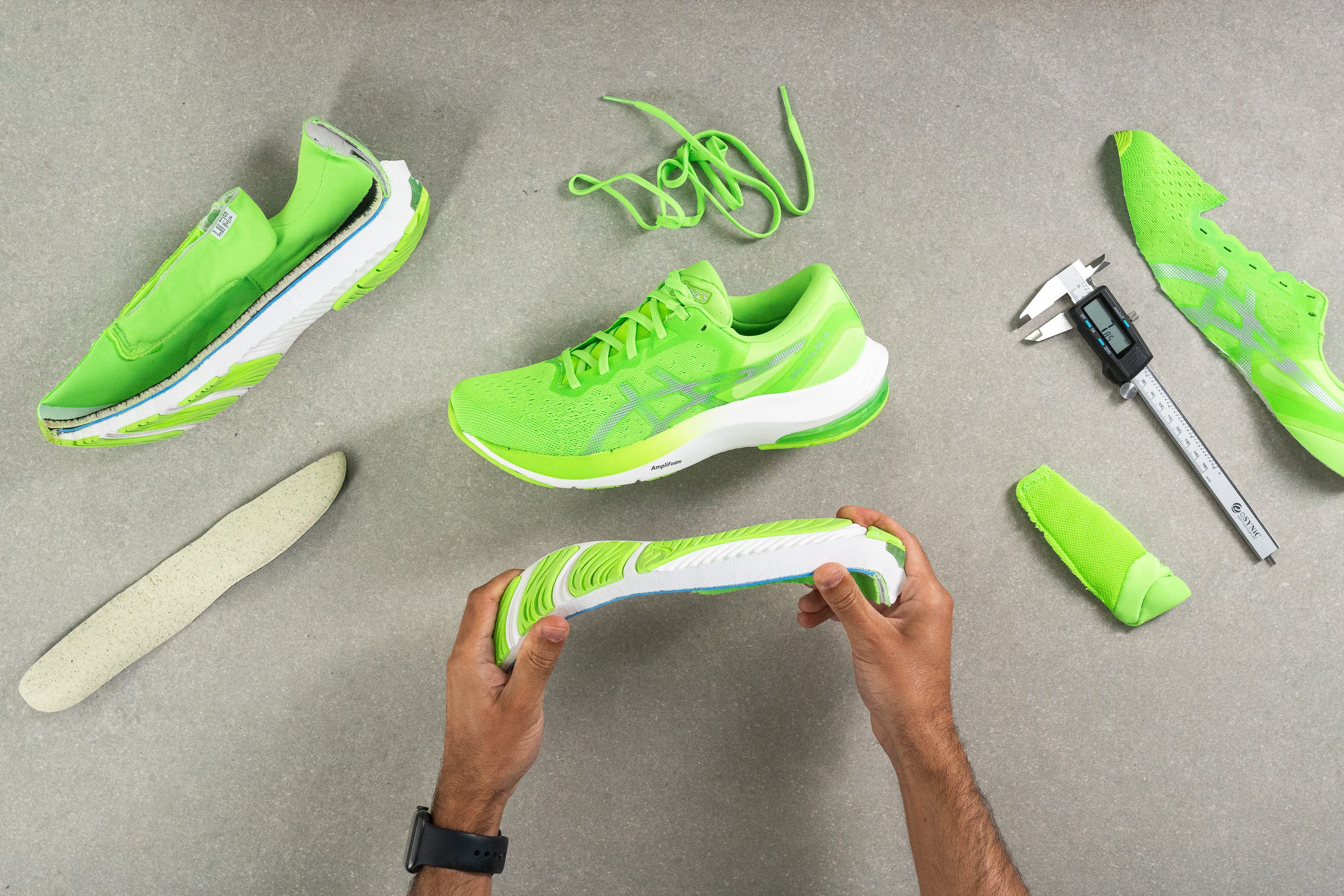
Cushioning
Heel stack
Measuring the stack at the heel, we found a massive discrepancy with the officially stated figures. According to ASICS, the Gel Pulse 13 should be 23 mm at the heel, but our calliper measurements reveal it to be 32.6 mm. We do measure the stack including the insole, but that doesn’t account for the 9.6 mm disparity.
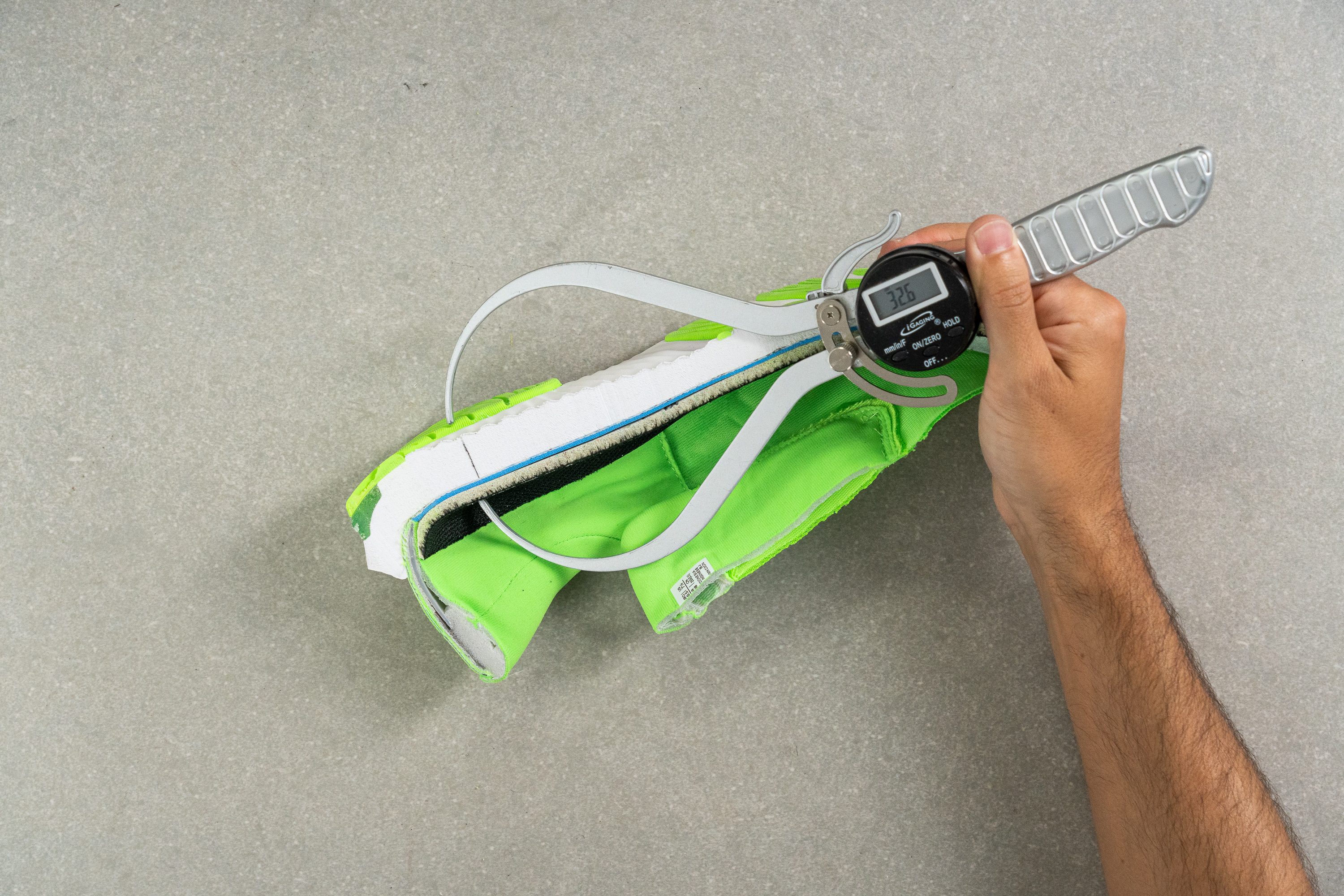
This is not abnormally high, however, as the Gel Pulse 13 still falls within the range of our lab average
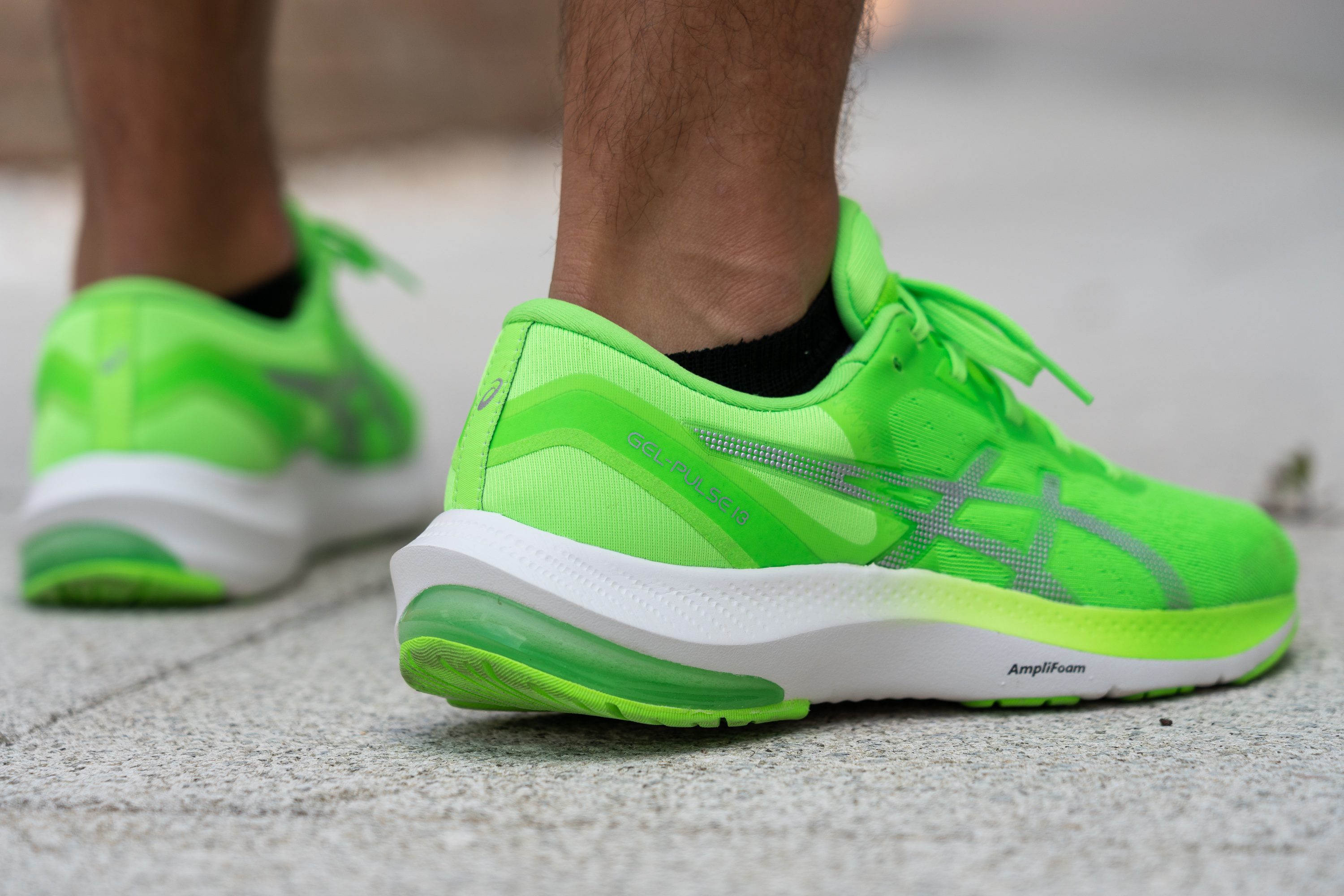
The higher a shoe’s stack, the more we are able to perceive the cushioning of the midsole underfoot. This is especially beneficial for longer runs and runners with a tendency to heel-strike.
| Gel Pulse 13 | 32.6 mm |
| Average | 34.7 mm |
Forefoot stack
We found a similar discrepancy when measuring the forefoot stack with our callipers in the lab. Coming in at 21.6 mm, the Gel Pulse 13 has a forefoot stack of 8.6 mm taller than the official figure of 13 mm.
This forefoot height puts the Gel Pulse 13 closer to our current lab average, though it still falls slightly short relatively speaking.
This stack height does give forefoot/midfoot strikers good impact protection, though for runners looking fore more ground-feel for their daily runs; we suggest the ASICS Gel Contend 8 which boasts a shorter forefoot stack.
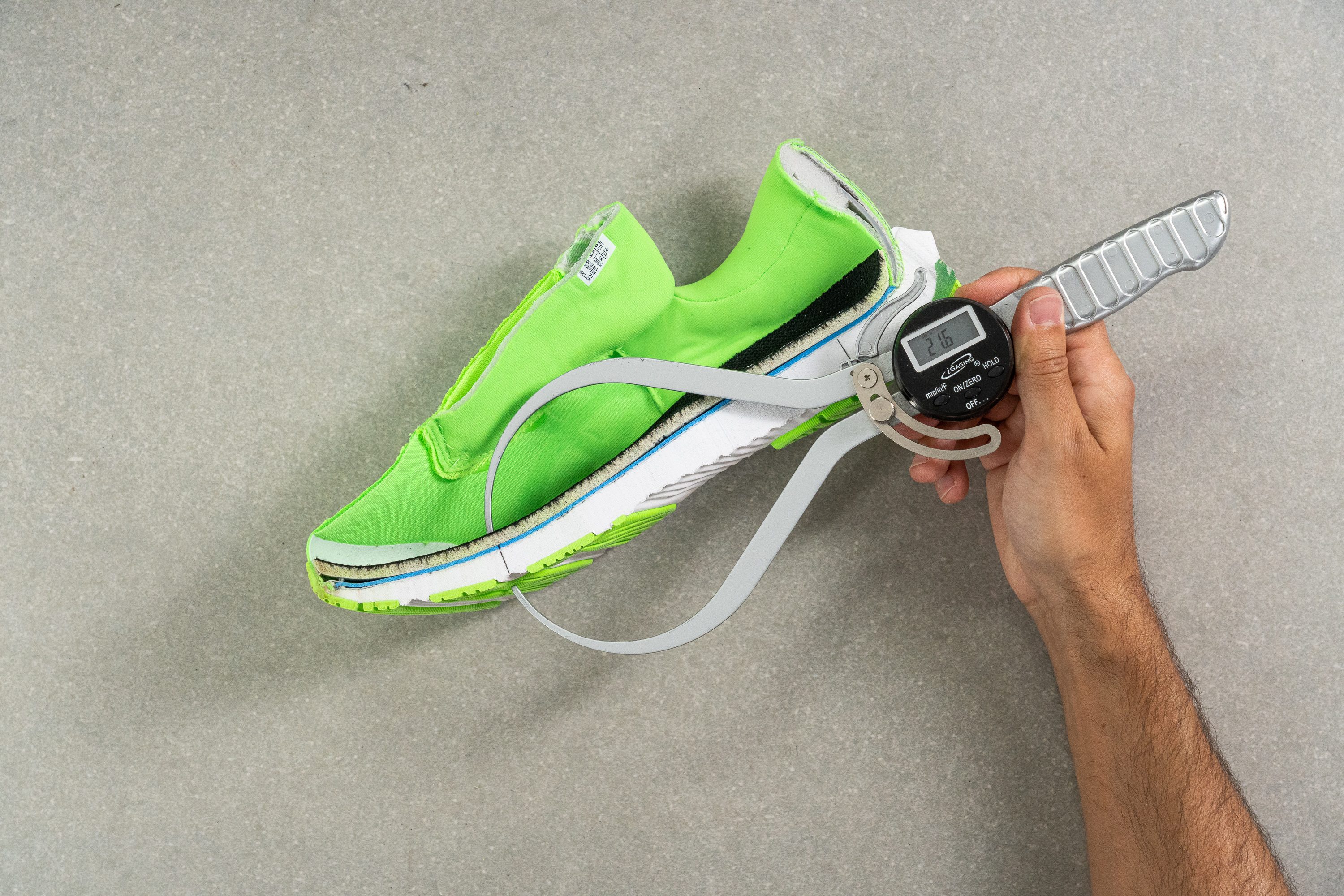
| Gel Pulse 13 | 21.6 mm |
| Average | 26.1 mm |
Drop
While the variance in the stack height measurements was rather large, the heel drop remains relatively accurate. Our figures give the Gel Pulse 13 a drop of 11 mm, just one millimetre off the 10 mm stated by ASICS.
This still classifies the Gel Pulse 13 as a high-drop shoe, and is a difference that only very few, highly-attuned runners will notice.
This drop height is a great start for beginner runners as it provides ample impact protection for heel-striking strides. It has also been found to help with injuries like plantar fasciitis; which often arises as a result of higher stress on the affected area due to increased activity.
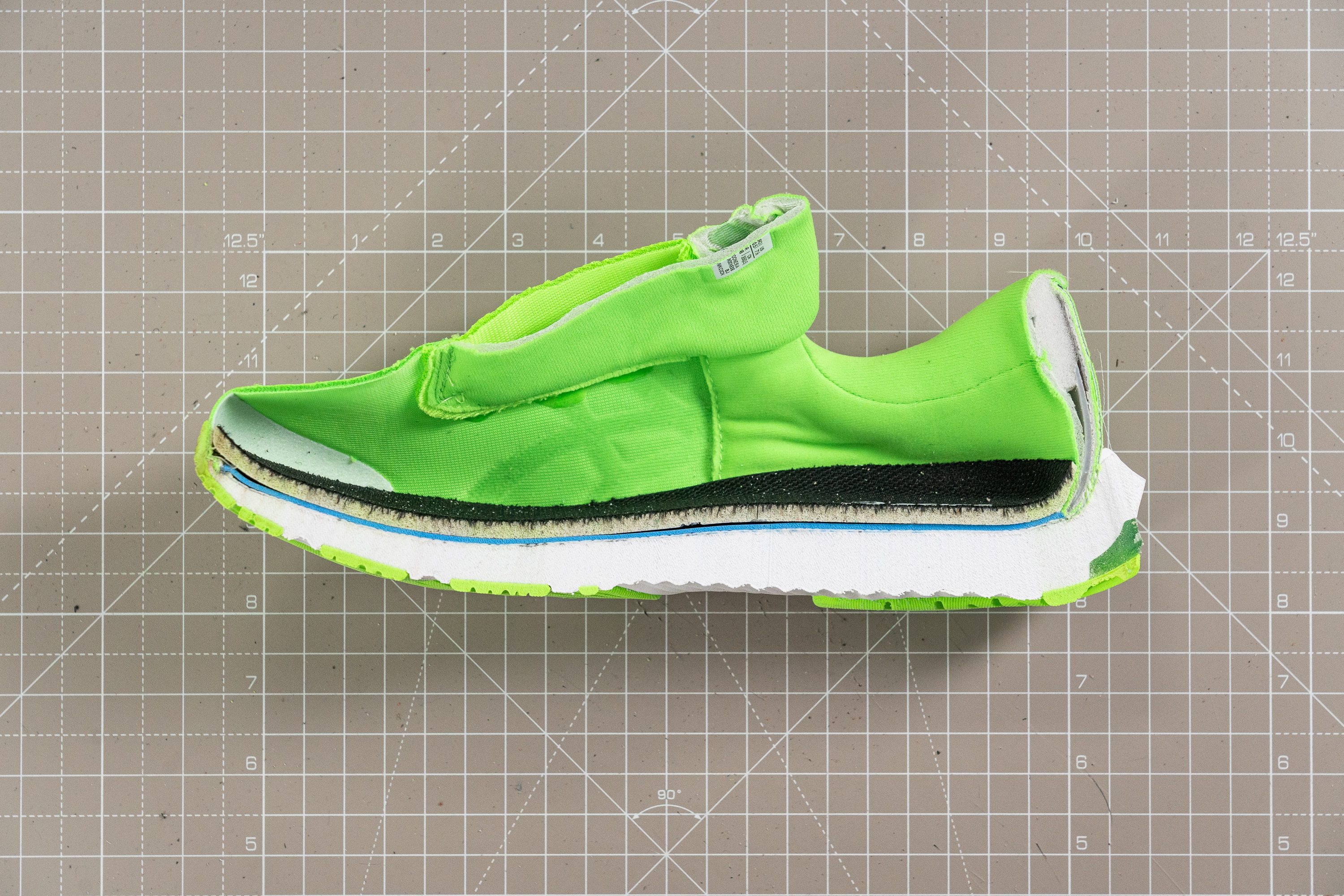
| Gel Pulse 13 | 11.0 mm |
| Average | 8.6 mm |
Midsole softness
Using a durometer to measure the softness of the midsole gives us a reading of 22.5 HA. This falls right within the average range for road-running shoes.
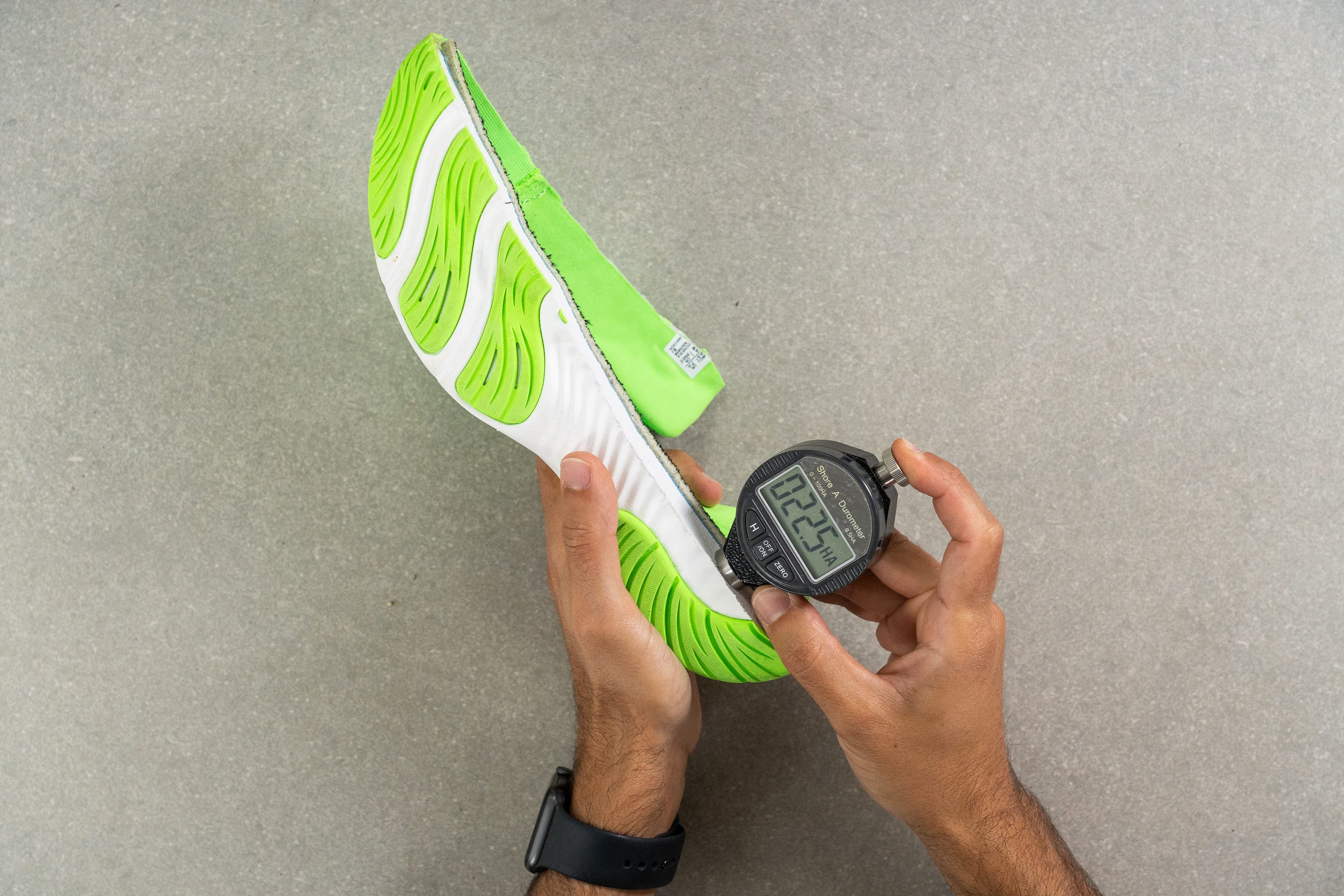
This result in combination with the stack height means that the Gel Pulse 13 does feel pretty balanced underfoot on our test runs; decently cushioned but with enough pop to make it feel lively rather than squishy.
While not totally dead, the midsole does lack the responsiveness needed for tempo-training. Runners looking for a versatile daily trainer with some zip to it should have a look at the Brooks Revel 6, which can pick up the pace on a similar budget.
| Gel Pulse 13 | 22.5 HA |
| Average | 20.4 HA |
Secondary foam softness
Size and fit
Size
ASICS Gel Pulse 13 fits true to size (13 votes).
Width / Fit
At 94.4 mm according to our calliper, the Gel Pulse 13's toebox is slightly narrower than our current lab average at its widest part. Despite this, the upper's mesh upper easily stretches over even the widest foot and decisively locks it down once laced up right.
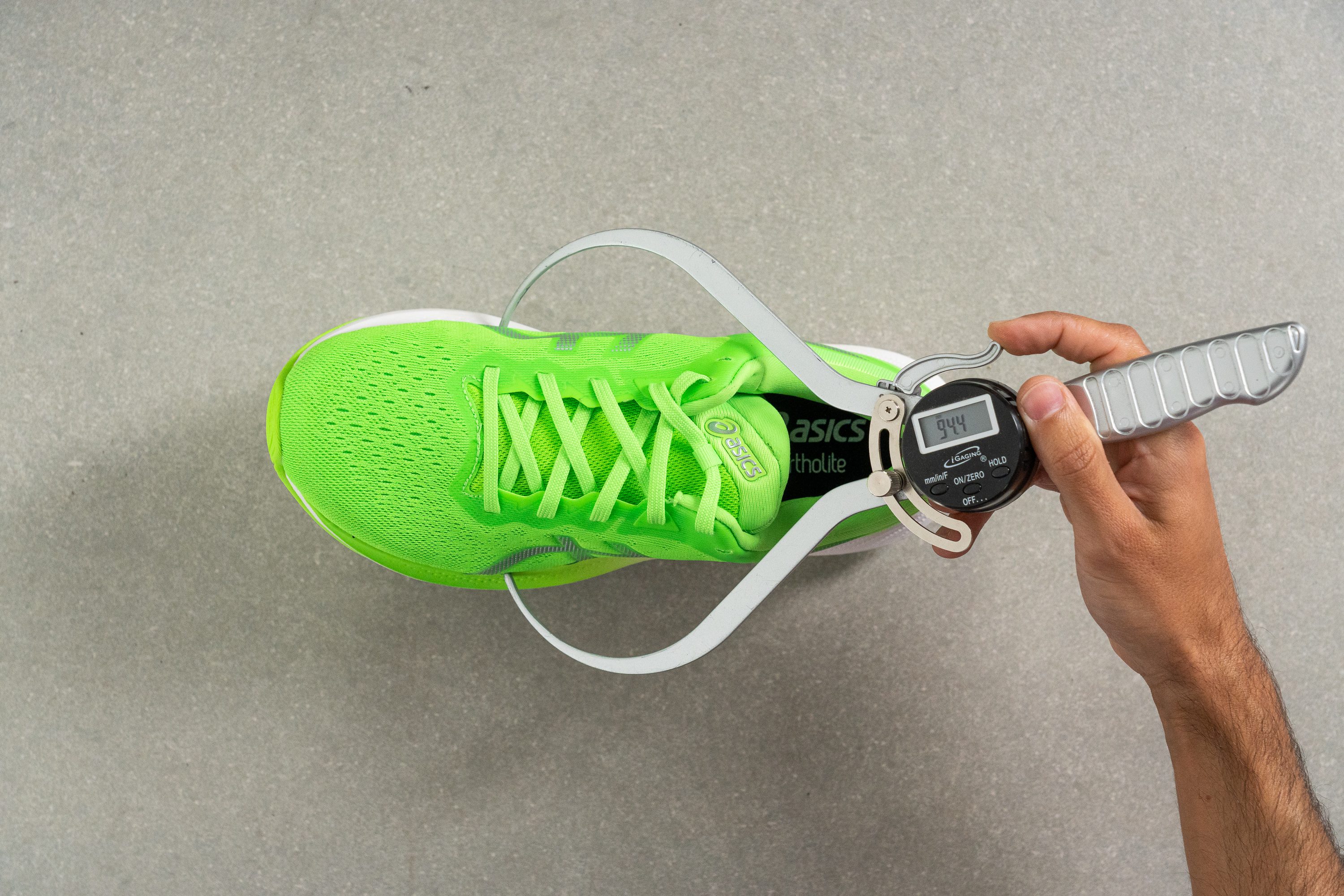
This test follows an older methodology, which is why you don't see recently tested shoes in the chart. Results from different methodologies can not be compared.
| Gel Pulse 13 | 94.4 mm |
| Average | 98.5 mm |
Toebox width
Measuring the toebox at the big toe, we found it to be 77.9 mm, which is a little roomier than our current lab average. Looking at these two measurements, we see that the Gel Pulse 13's toebox doesn't taper towards the toe as significantly as the average shoe.

This means that wide-footed runners should still have more than enough room for their feet to splay out on landings.
This test follows an older methodology, which is why you don't see recently tested shoes in the chart. Results from different methodologies can not be compared.
| Gel Pulse 13 | 77.9 mm |
| Average | 78.4 mm |
Flexibility / Stiffness
Requiring a measly 14N of force to bend the Gel Pulse 13 90-degrees in our stiffness test makes it significantly more flexible than the average shoe.
This means that even as our feet got tired and swelled up towards the end of our longer test-runs, the Gel Pulse 13 was easily able to adapt to the shape and movement of our feet. This had us gobbling up our mile markers while feeling as fresh by the end as we did at the start, and with no rush to peel off the shoe for sweet relief afterward.
It also means that the Gel Pulse 13 feels great right out of the box, with no breaking-in period that is often associated with stiffer shoes.
While this feature lends itself to comfort, we found the flexibility of the Gel Pulse 13 to come at the expense of performance. That lack of rigidity underfoot gives us a less responsive surface to spring-off from which, in combination with the not-so-responsive midsole, means that we won’t be breaking any PRs in this shoe.
This test follows an older methodology, which is why you don't see recently tested shoes in the chart. Results from different methodologies can not be compared.
| Gel Pulse 13 | 14.0N |
| Average | 28.1N |
Stiffness in cold (%)
Testing the stiffness of the shoe again after 20 minutes in the freezer to simulate exposure to cold weather, the Gel Pulse 13 gave us a reading of only 33.3N. This is well below the amount of force needed for the average shoe under similar conditions, and means that cold-climate runners will also reap the comfortable benefits of this shoe.
With a 137% percent difference in stiffness between warm and cold condtiions, the Gel Pulse 13 isn't as consistent as the average shoe which tends to stiffen up much less than that.
While this means that the shoe won’t feel as flexible on cold days, its reading of 33.3N after the freezer is comparable to the amount of force needed to bend the average shoe at room temperature! Given that context, it really is a remarkably pliable shoe.
| Gel Pulse 13 | 138% |
| Average | 33% |
Weight
The Gel Pulse 13 could use a bit of a diet. Tipping the scale at 10.6 oz (300g) makes it heavier than the average shoe. While not devastatingly heavy, lugging that weight definitely stifles speedier runs and feels burdensome after longer ones.
For a shoe that’s light on the budget as well as light on the scale, have a look at the ASICS Gel Excite 9.
| Gel Pulse 13 | 10.3 oz (291g) |
| Average | 9.3 oz (264g) |
Breathability
One thing’s for certain with the Gel Pulse 13, it’s an airy shoe. We tested this in the lab by pumping smoke into the shoe, and we can clearly see how quickly and evenly it escapes throughout the upper and tongue.
The shoe’s ventilation capacity scored a perfect 5 out of 5 from us.
Further corroborating the breathability of the Gel Pulse 13 is just how much our light shines through a cross-section of its upper.
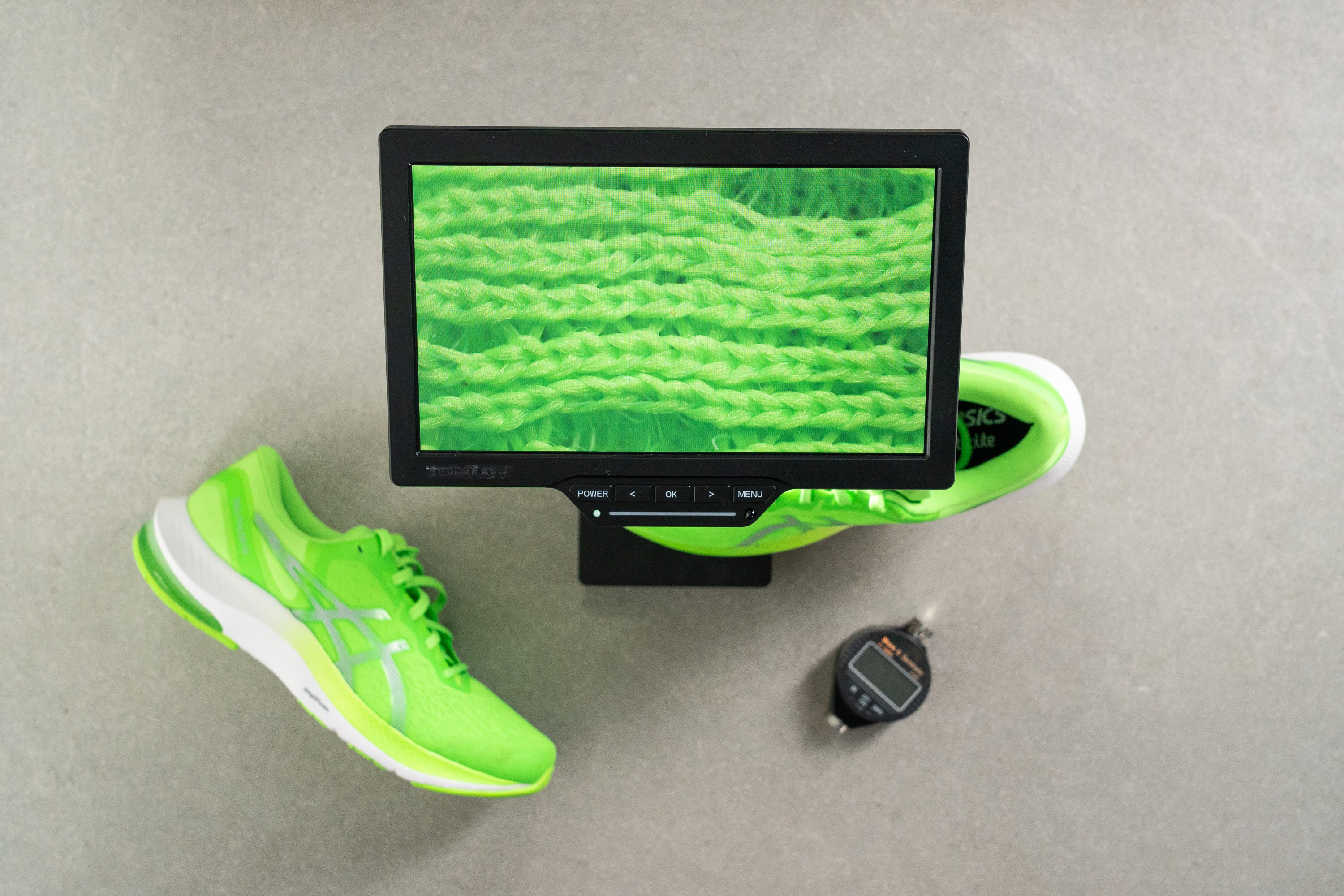

That in combination with our close-up images of the upper’s mesh shows us that the weave isn’t so dense as to trap in heat. This means that the Gel Pulse 13 is a great choice for warm runs in the summer sun.
| Gel Pulse 13 | 5 |
| Average | 3.7 |
Stability
Lateral stability test
For a shoe that feels well-cushioned, we found the Gel Pulse 13 to be more stable than we anticipated.
As we can see from the demonstration above, the shoe stays well-planted on the ground giving us low risk of ankle rolls on our runs. Indeed when testing the shoe we felt surefooted and stable throughout.
Torsional rigidity
The Gel Pulse 13 twists and contorts with relative ease, leading us to give it a score of 2 out of 5 on our subjective stiffness scale. This gives us an impression of how much the shoe conforms with the natural movement of the foot which, in practice, translates to overall comfort.
This, however, is less than ideal for overpronating runners who need a stiffer shoe with stability features to prevent inward rolling of the foot. These runners should consider the ASICS GT 1000 11 or the ASICS GT 2000 11.
| Gel Pulse 13 | 2 |
| Average | 3.5 |
Heel counter stiffness
Pinching and squeezing the heel counter reveals it to be of medium stiffness, giving the Gel Pulse 13 a score of 3 out of 5 on our subjective scale. This combined with the ample padding around the ankle collar gave us a strong lockdown around the ankle and kept our heel from rubbing against the shoe.
| Gel Pulse 13 | 3 |
| Average | 2.9 |
Midsole width - forefoot
We measured the midsole to be 111.3 mm wide at the forefoot, making the Gel Pulse 13 a hair narrower than our current lab average. This didn't present us with any problems on our test runs where we felt that the shoe has ample platform for stable landings.
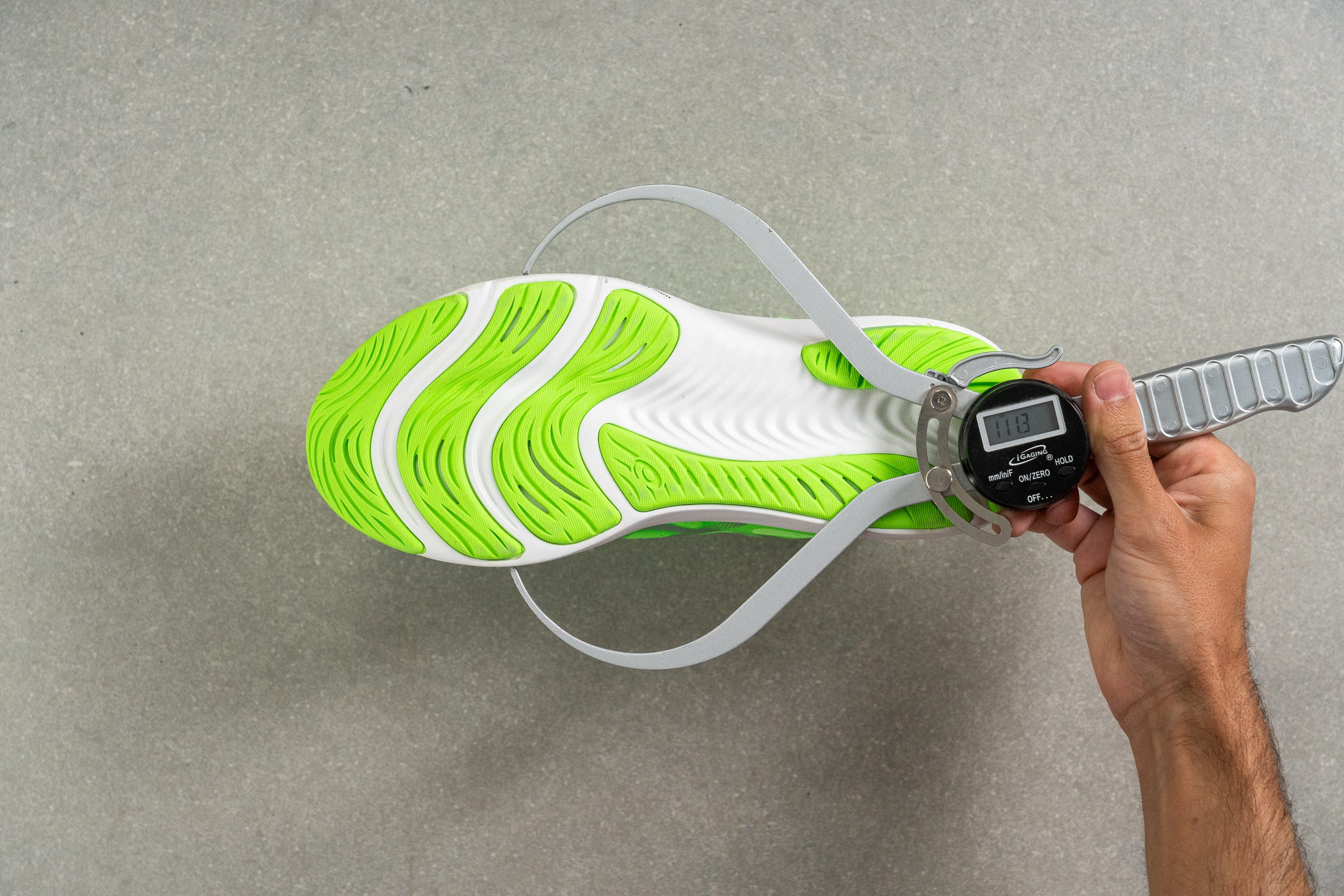
| Gel Pulse 13 | 111.3 mm |
| Average | 114.3 mm |
Midsole width - heel
At 86.8 mm according to our calliper, the Gel Pulse 13's midsole tapers a little more than most shoes towards the heel, leaving us with a narrower than average platform at the rearfoot. Nonethelss, this didn't present us with any stability issues when landing on our heels during test runs.
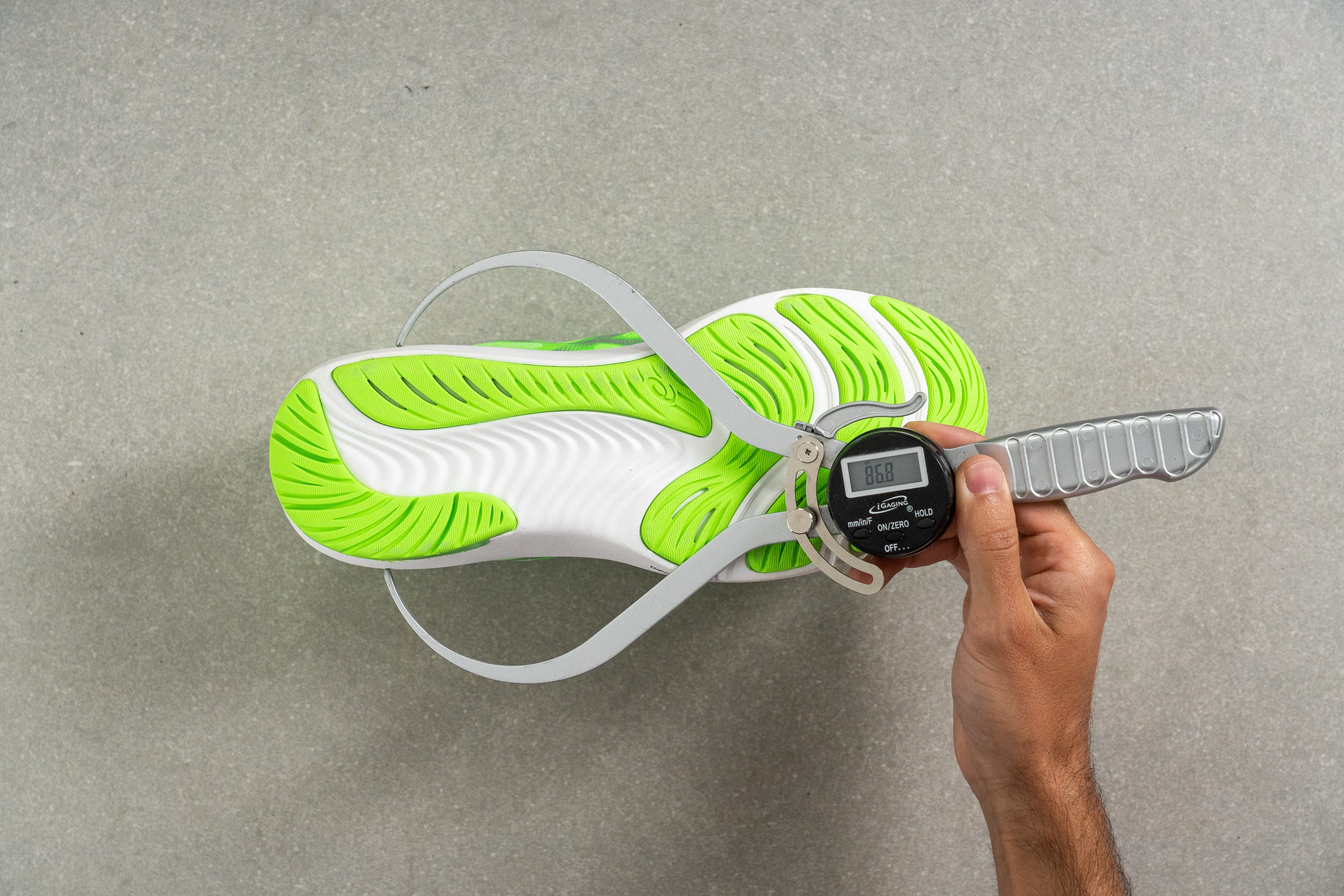
| Gel Pulse 13 | 86.8 mm |
| Average | 90.7 mm |
Durability
Toebox durability
With such delicate material making up the upper mesh, it’s no surprise that the Gel Pulse 13’s toebox didn’t fare too well in our durability test. To simulate wear and tear over time, we pressed a Dremel against the fabric. After 4 seconds at 10K RPM with a force of 13.2N, we absolutely shredded through the toebox.
Looking at the close-up of the toe-box material again, we can see the fine threads fraying from the irregularly spaced braids; which indicates the upper’s poor construction quality. This isn’t unusual for an entry-level budget shoe, but buyers should be mindful that one wrong snag might send the Gel Pulse 13 to an early retirement.
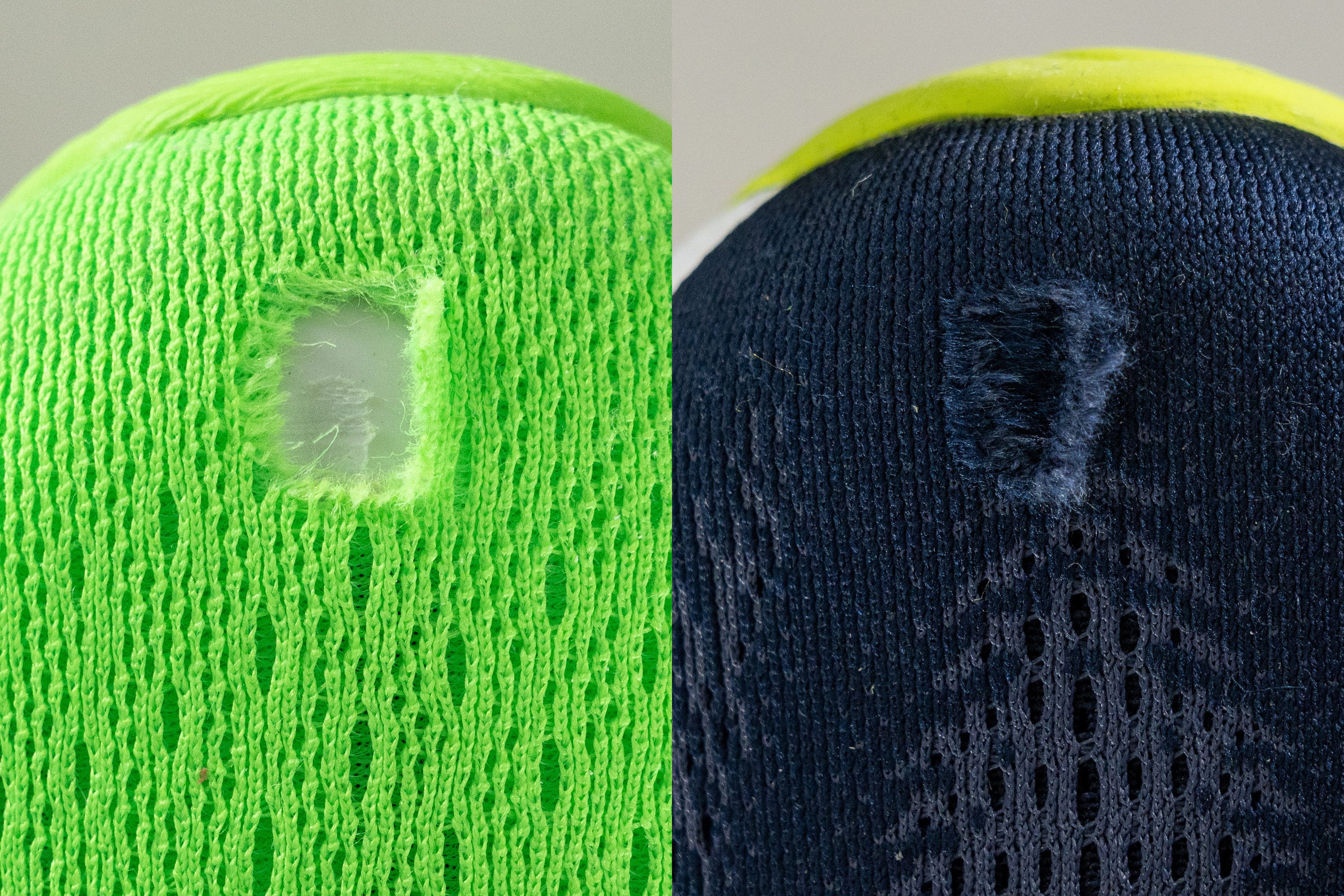
| Gel Pulse 13 | 1 |
| Average | 2.6 |
Outsole hardness
Pressing our durometer against the outsole gives a reading of 80.8 HC, which is right around average for a road-running shoe. This level of hardness contrubutes to the durability of the outsole, but is still pliable enough to get good a bite on the ground and provided us with great traction on our test runs.

| Gel Pulse 13 | 80.8 HC |
| Average | 79.2 HC |
Outsole durability
To test the durability of the outsole in the lab, we applied a Dremel against the rubber at 10K RPM with a force of 13.5N for 12 seconds. We can see that, despite not featuring ASICS’ AHAR carbon rubber found in previous models, the Gel Pulse 13’s outsole managed to withstand the test with minimal damage, as opposed to the shoe’s upper.
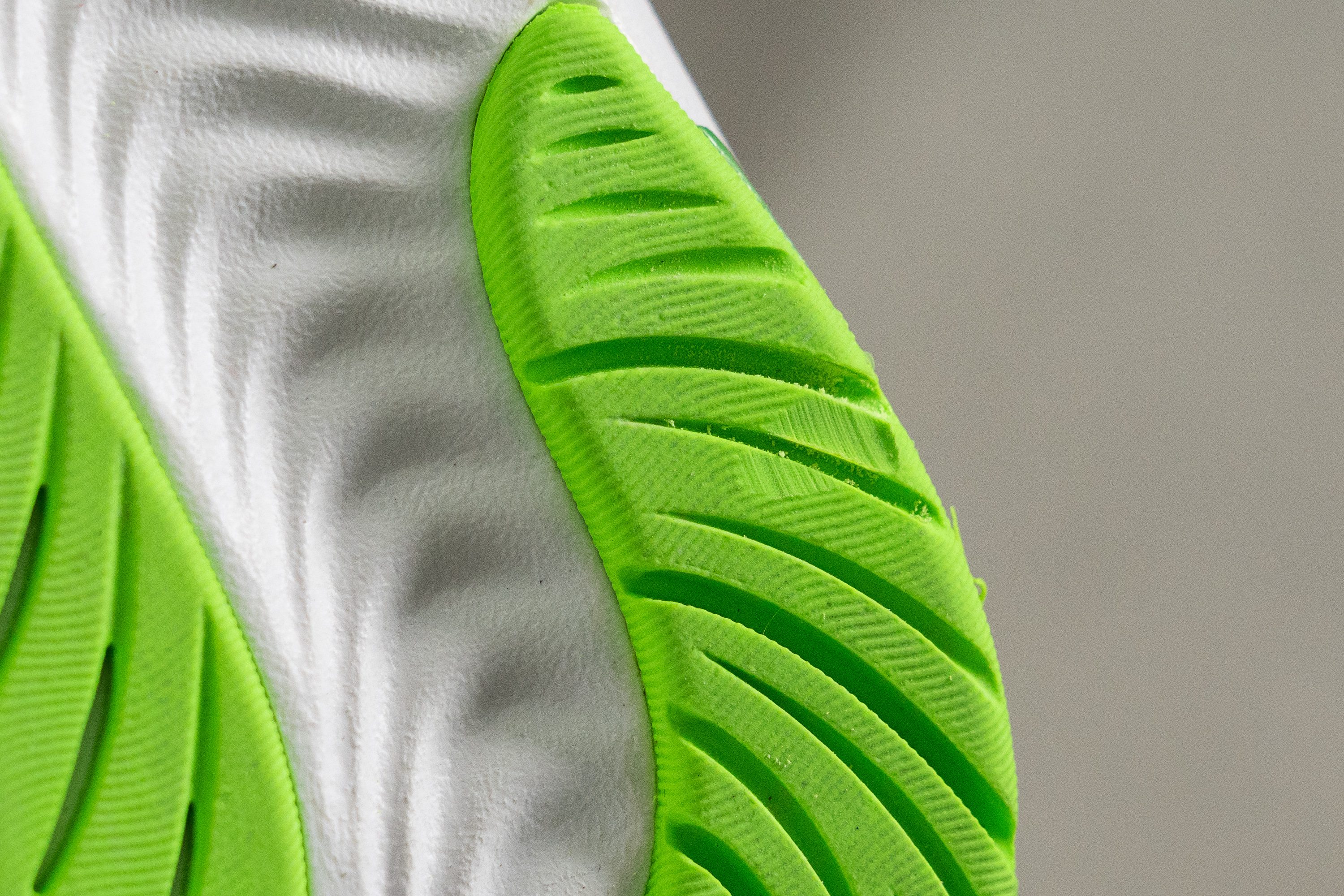
This result gives the Gel Pulse 13 an outsole durability score of 4 out of 5, with 5 being the most durable, so the outsole will certainly outlast the shoe's upper.
Outsole thickness
The outsole is a little notably thicker than average. Using our caliper we measured it at 5.1 mm against the current lab average of 3.5 mm. This 1.6 mm difference is quite high for a road-shoe, and gives us just that much more durable rubber to contend with before punching through to the midsole. This leads us to conclude that this shoe should last at least 500-miles, given the upper doesn’t face a catastrophic failure along the way.

| Gel Pulse 13 | 5.1 mm |
| Average | 3.2 mm |
Misc
Insole thickness
The insole measures 4.5 mm, right within the lab average. This accounts for less than half of the stack height divergence.

| Gel Pulse 13 | 4.5 mm |
| Average | 4.5 mm |
Removable insole
The insole of the gel Pulse 13 is removable, which means that runners with special orthotics can use them with this shoe.
| Gel Pulse 13 | Yes |
Midsole softness in cold
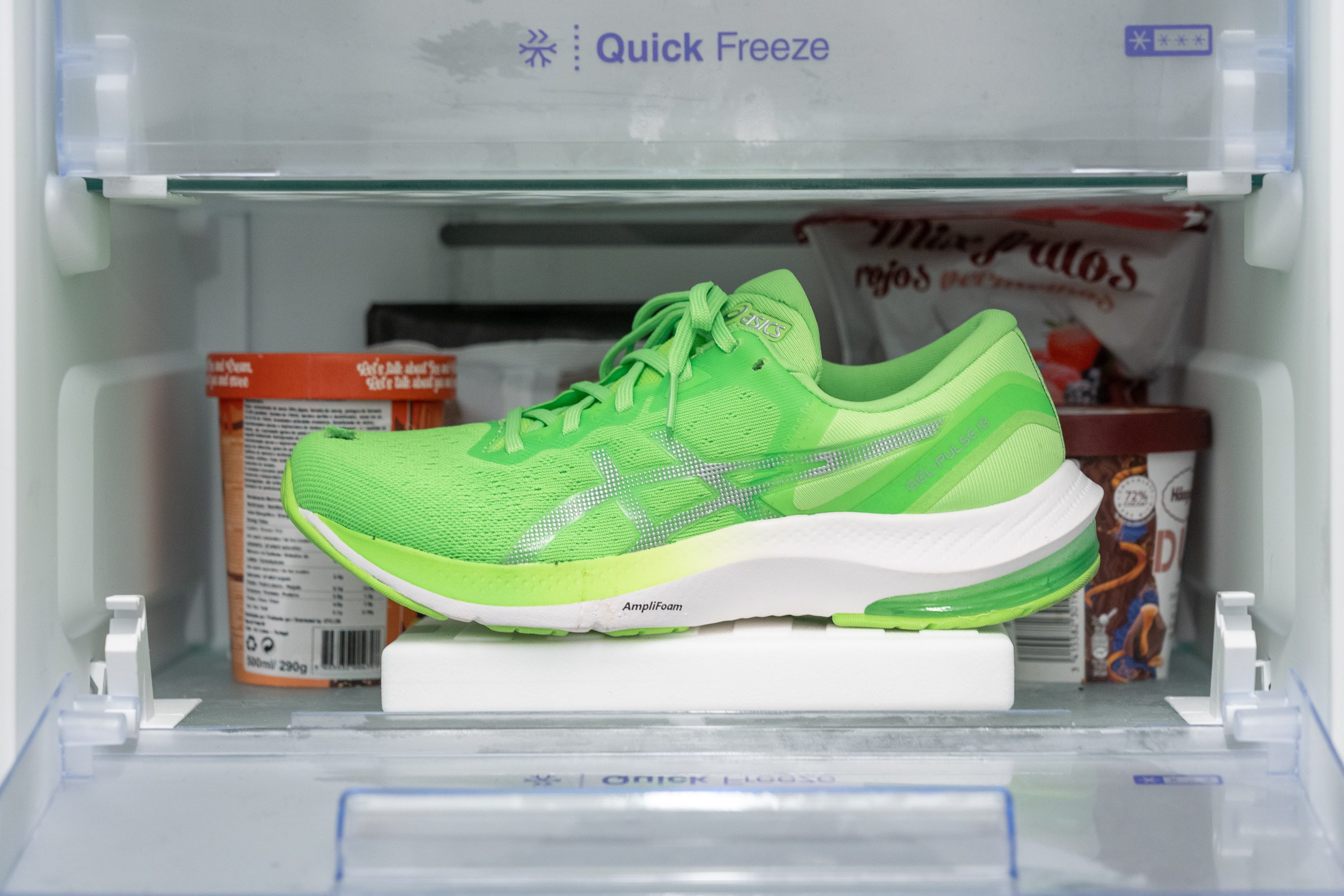
Midsole softness in cold (%)
To see how the shoe’s midsole foam reacts to cold weather conditions, we placed the Gel Pulse 13 in the freezer for 20 minutes. When we repeated the durometer measurement afterwards, it gave us a reading of 31.3 HA, right in the average range for road-running shoes. This means that cold days are no deterrent to the Gel Pulse 13, which feels just as comfy underfoot even during the frostiest days.
We found that the Gel Pulse 13 gets 38.9% firmer in cold conditions. This makes it a little less consistent than the average shoe that only stiffens up by 27%, but still doesn’t feel like running on a block of ice.
| Gel Pulse 13 | 39% |
| Average | 24% |
Tongue padding
We measured the tongue with our caliper to be 4.8 mm. While this may be 0.9 mm shy of the average tongue thickness, we still felt it to be padded enough to provide a snug and comfy midfoot lockdown while avoiding any unwanted lace-bite. It also manages to stay in place quite well for a non-gusseted tongue.
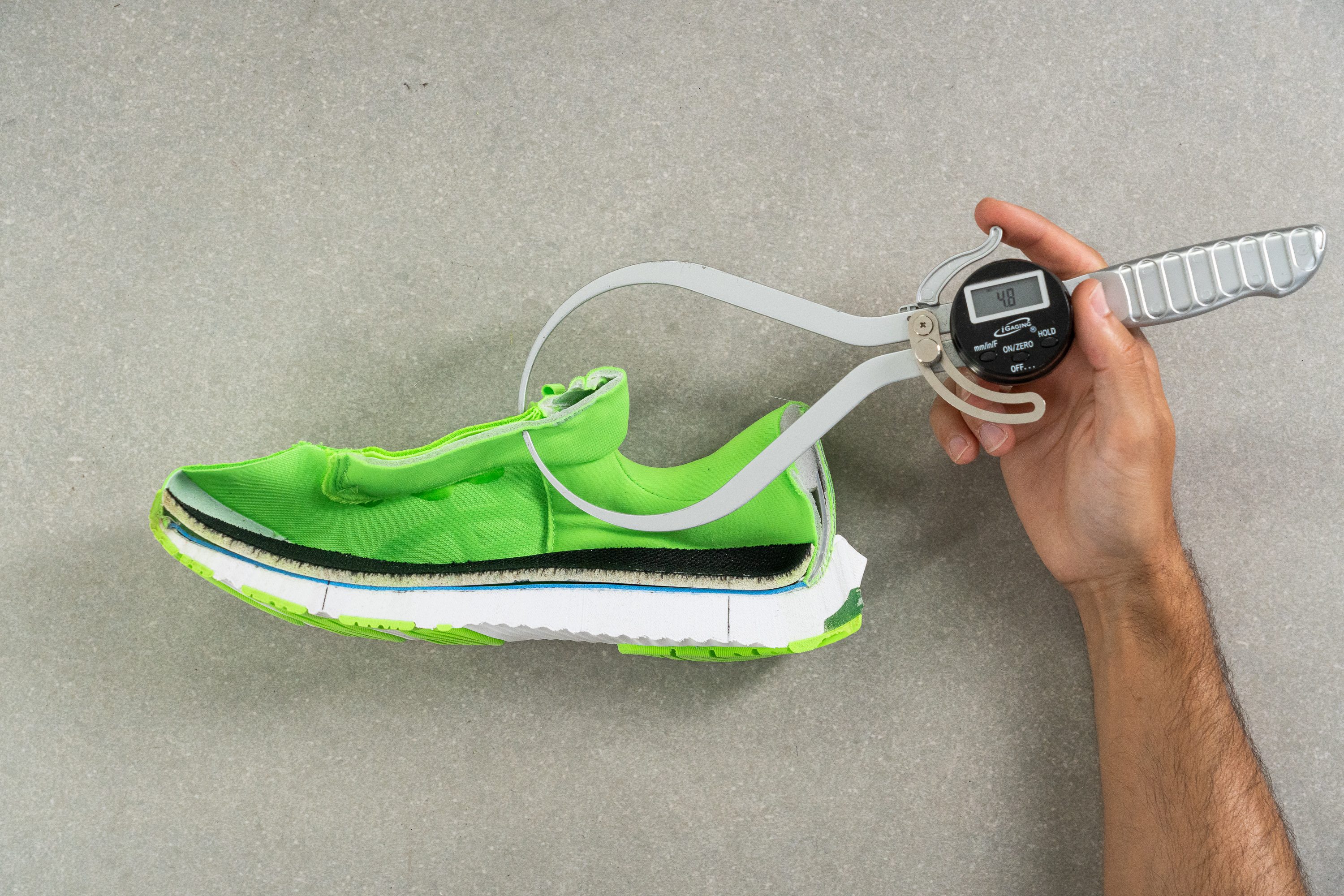
| Gel Pulse 13 | 4.8 mm |
| Average | 5.8 mm |
Tongue: gusset type
While the tongue on the Gel Pulse 13 has no gusset, we didn't have to contend with any tongue slippage during or test runs.
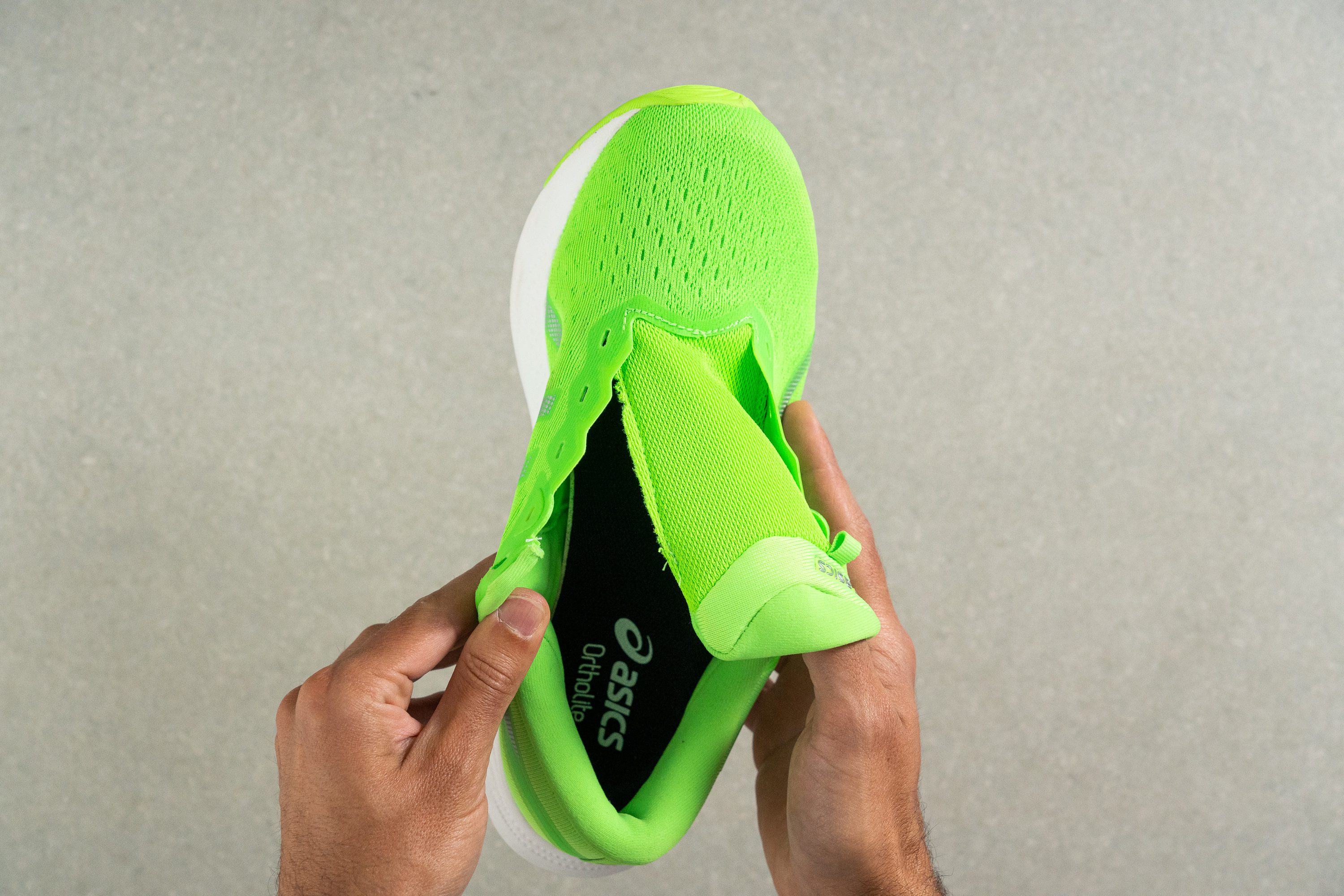
| Gel Pulse 13 | None |
Heel tab
The Gel Pulse 13 doesn't include any type of heel tab, though we were still able to slip in and out of it with ease.
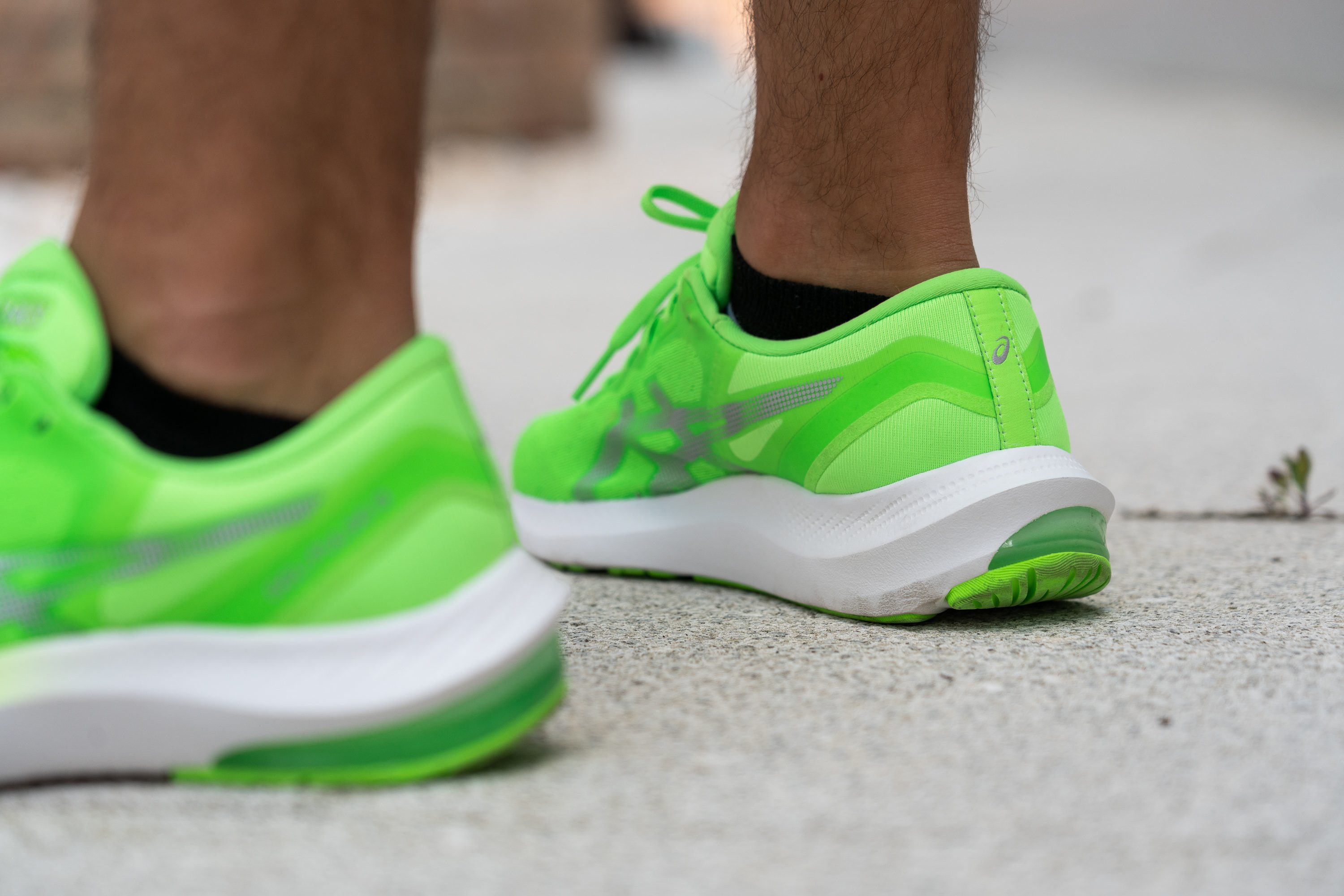
| Gel Pulse 13 | None |





































